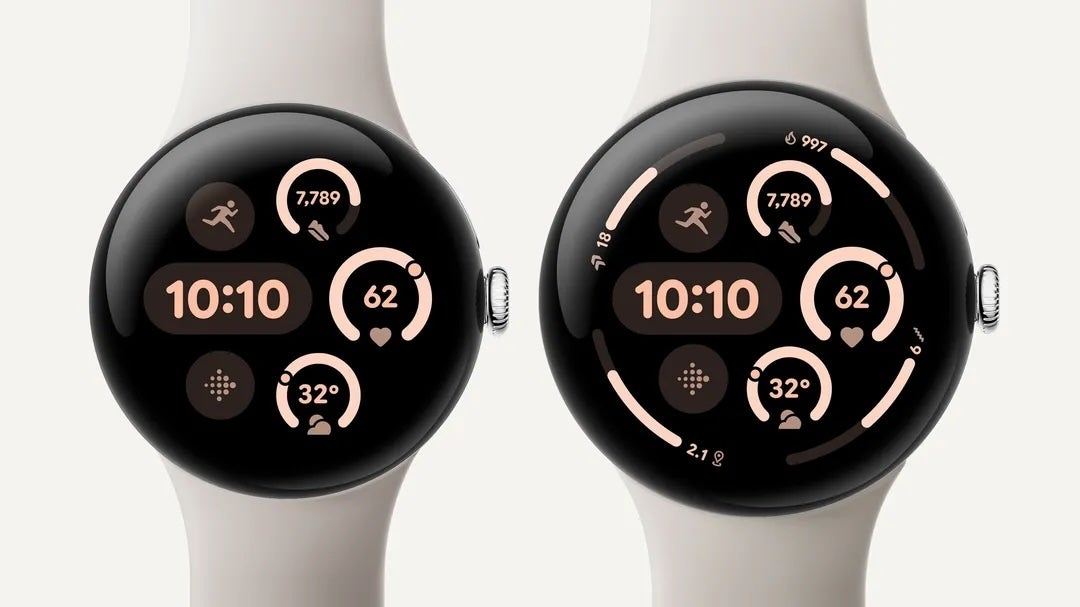Google showed off its next-generation Pixel 9 phones, its new Gemini AI features, the Pixel Watch 3, and the Pixel Buds Pro 2 at the Made by Google presentation on Aug. 13, streamed from Mountain View, California.
The technology represents Google’s efforts to strengthen its ecosystem with AI, Rick Osterloh, senior vice president of platforms and devices at Google, said at the event.
Pixel 9 and Pixel 9 Pro XL will be available Aug. 22
Pixel 9, available Aug. 22, comes with 12GB of RAM and an ultrawide camera. Its Google Tensor G4 chip enables generative AI, and Google is going all-in on Gemini AI with generative features both on-device and in the cloud. Pixel 9 starts at $799.

The premium model, Pixel 9 Pro, comes in two sizes: the 6.3” version for $999 or the 6.8” Pixel Pro XL for $1,099. Both have 16GB of RAM.
Pixel 9, Pixel 9 Pro, and Pixel 9 Pro XL are available for preorder today. Pixel 9 and Pixel 9 Pro XL will hit store shelves on Aug. 22, followed by Pixel 9 Pro and Pixel 9 Pro Fold on Sept. 4 in the U.S. Other geographical markets will follow. See Google for complete international availability information.
Pixel 9 Pro Fold is Google’s second-generation flip phone
The Pixel 9 Pro Fold brings the same Tensor G4 chip to the trendy foldable form factor. Note the name change: Pixel 9 Pro Fold is the successor to last year’s Pixel Fold, so it’s notable that Google is integrating it into the Pixel lineage overall instead of turning the Fold line into a new branch of the family tree.
The Pixel 9 Pro Fold can be used from the front screen or from a large inner display. Some applications are unique to the front screen, such as the Made You Look widget, which encourages distracted children to smile at the screen during photo opportunities.
This device starts at $1,799 and is available for preorder today.
All new Google phones come with seven years of OS and security updates.
Google wants to build its ecosystem around Gemini
The Pixel 9 series shows Google’s steadfast commitment to integrating its AI into every aspect of using a smartphone. The new AI features add to the generative voice and image capabilities demonstrated at Google I/O in May.
Google Gemini on the Pixel 9 line will interface with Calendar, Tasks and Keep as well as the other major Workspace applications. This enables capabilities such as checking the user’s schedule or automatically adding items to a to-do list. In the live presentation, Google Gemini wouldn’t load its response when Gemini Senior Director of Product Dave Citron asked whether he was available for a concert. It took a third try and a different phone for Gemini to reply. After Gemini did reply, though, it successfully accessed the Calendar app and informed Citron his schedule was open.
Google Gemini on the Pixel 9 line can run at 45 tokens per second, up to double Pixel 8’s throughput. All three Pro phones come with one year of Gemini Advanced and 2 TB of cloud storage.
Google Gemini’s voices in the Gemini Live conversational mode sound natural, and there are a variety to choose from. This live demonstration worked more smoothly than the previous demonstration, showing how the AI assistant responds to interruption and remembers context from earlier in the conversation.
AI makes a big difference to taking photos on Google phones, too. Magic Eraser photo editing came out three years ago and is now evolving into Magic Editor, a generative AI tool that can help you “re-compose” images. It can fill in blanks or replace backgrounds entirely.
In the new Pixel Weather app, Gemini Nano can generate a custom weather report so users can read one summary instead of skimming through different parts of the app. Drag and drop different features to prioritize what matters most to you.
Google Gemini gives an AI boost to Call Assist, a feature that can autonomously wait on hold or help navigate phone trees; the AI-generated Call Notes gives you a summary of conversations. These might be particularly helpful for busy professionals, who could use the summaries to help remember the details of important conversations.
Pixel Screenshots helps organize screenshots into folders or search for information within those screenshots. The Add Me feature on the Pixel camera lets you add people to photos by holding space for them — essentially removing the need to ask a stranger to hold your phone to get the whole family in a picture on vacation.
Like Apple’s latest phones, Google’s next-generation phones will offer Satellite SOS for emergency calling. The carrier-agnostic Satellite SOS will initially only be available in the U.S. It will be free for the first two years of Pixel ownership.
Competitors to the Pixel 9 phones
The Pixel 9 line will compete with Apple’s iPhone 16 series, anticipated to make its debut this fall, and Samsung’s Galaxy S24 series, available now.
SEE: Google Chrome: Security and UI tips you need to know (TechRepublic Premium)
Pixel Watch 3 joins Google’s stable of wearables
Google’s next wearable is the Pixel Watch 3, which comes in two sizes, 41mm or 45 mm. Each version offers more screen space than the Pixel Watch 2.
This smart watch includes:
- Biometric trackers.
- Workout analysis for runners.
- Google AI add-ons for Fitbit Premium.
It also includes Loss of Pulse Detection, a new feature which essentially turns the watch into a life-sign monitor. Due to ongoing work to get Loss of Pulse Detection regulated elsewhere, this feature will only be available in select countries in Europe to start, beginning in September.

In terms of Google’s overarching ecosystem, Pixel Watch 3 will be able to sync notes and calls to Pixel phones. BMW and MINI have partnered with Google to let the Watch 3 function as a digital car key, too.
Pixel Watch 3 is available now for preorder, with general release on Sept. 10. The 41mm version starts at $349.99 for Bluetooth/Wi-Fi and $449.99 for LTE. The 45mm version starts at $399.99 for Bluetooth/Wi-Fi and $499.99 for LTE.
Pixel Buds Pro 2 enable Google AI on the go
Gemini AI is a refrain in the announcement of Google’s next earbuds. The voice assistant Google Live can be activated right from the Pixel Buds Pro 2.

The new buds are 24 percent lighter and 27 percent smaller than Pixel Buds Pro, Google says, with a redesigned twist-to-adjust stabilizer and eartip options for comfort. Google enhanced Active Noise Cancellation and uses the Tensor A1 chip to stream music independently of the Active Noise Cancellation processing for a more immersive sound.
Pixel Buds Pro 2 can be preordered today for $229 and will be available Sept. 26.
TechRepublic covered Made by Google remotely.
Source link
lol

